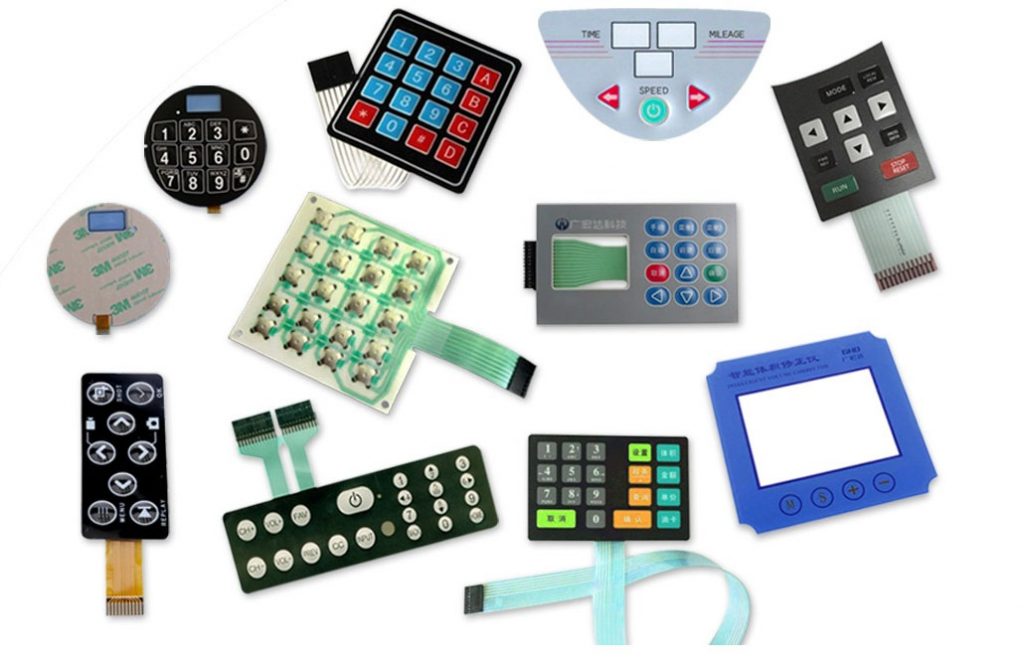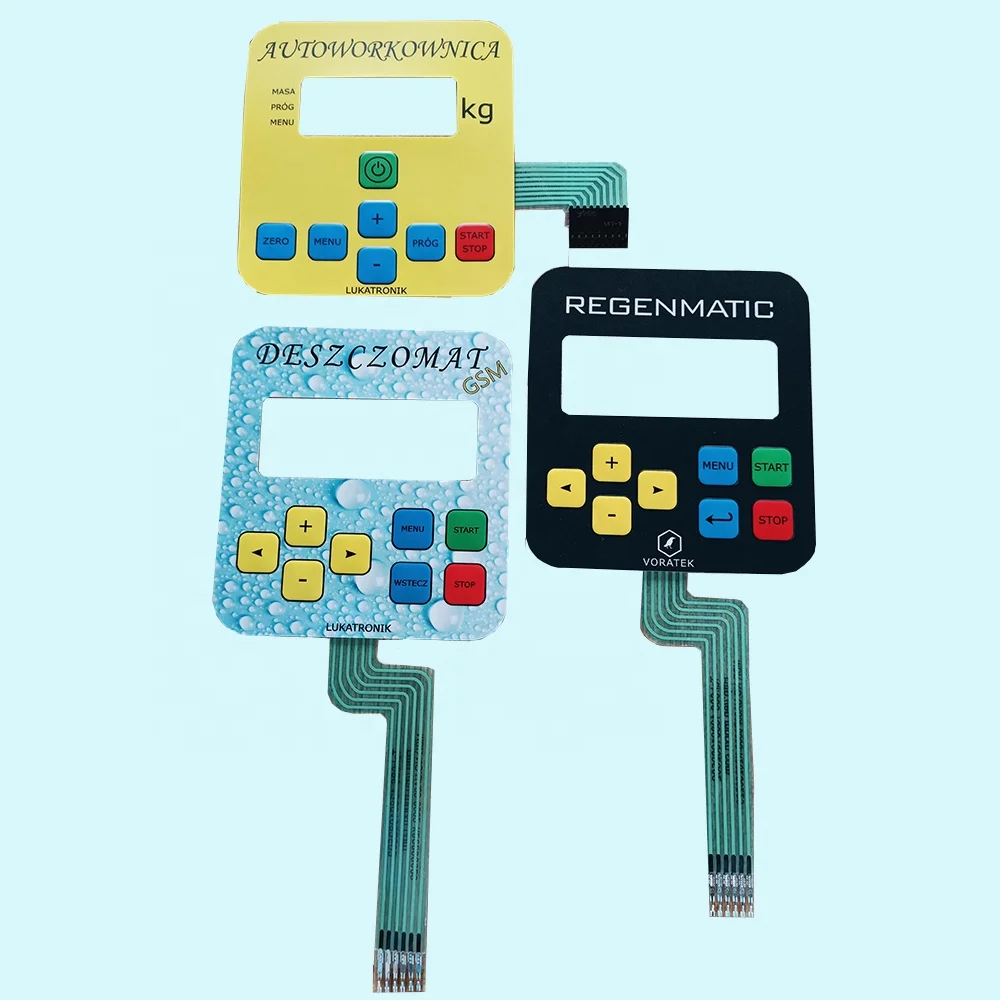Comprehending the Significance of Membrane Switch in Modern Electronic Devices and Their Applications
Membrane switches function as an essential part in modern electronics, using an effective user interface for user interaction. Their adjustable and light-weight nature makes them suitable for a series of applications across varied industries. Understanding their key components and advantages can give insights into their growing significance. As innovation continues to development, the development of Membrane switches raises questions regarding their future applications and style advancements. What lies ahead in this vibrant field?

What Are Membrane Buttons?
Membrane switches are crucial elements in modern electronic devices, acting as interface that assist in interaction in between customers and tools. These buttons include a number of layers, including a visuals overlay, an adhesive layer, and a circuit layer, every one of which collaborate to develop a functional and long lasting interface. The design permits a flat, inconspicuous service that can be personalized regarding size, shape, and aesthetic appearance, making them ideal for various applications, from consumer electronic devices to medical gadgets. The responsive feedback given by Membrane changes boosts user experience, while their resistance to dust and dampness makes them perfect for testing atmospheres. Membrane switches can include attributes such as backlighting and printed graphics, even more increasing their use. Their versatility and effectiveness make them a preferred option in sectors where integrity and ease of use are critical, ultimately adding to the smooth operation of modern electronic gadgets.
Secret Parts of Membrane Switches Over
While different components add to the performance of a membrane layer switch, three main layers play substantial functions in its style and operation. The top layer, generally made from a resilient polymer, acts as the user interface for customer communication, frequently featuring printed symbols and graphics. Beneath this is the spacer layer, which preserves the needed range between the top layer and the circuit layer. This spacer layer guarantees that the switch activates only when pushed, avoiding unintentional inputs. Ultimately, the circuit layer includes conductive traces that complete the electrical circuit when the leading layer is dispirited. These traces can be made from different materials, including copper or silver. With each other, these elements produce a robust and reliable gadget that is portable and flexible, suitable for a vast array of electronic applications, from house home appliances to medical tools. Recognizing these vital elements is important for valuing the total performance of Membrane buttons.
Advantages of Using Membrane Switches Over

Membrane Switch Manufacturing Refine
Comprehending the Membrane switch production process reveals the detailed actions involved in generating these crucial elements. The process normally begins with the style stage, where designs and specifications are produced using specialized software program. Following this, the graphic overlay is published on a flexible substratum, frequently making use of high-resolution printing methods to assure quality and precision.Next, the sticky layers are used, which serve to bond the different components with each other. The circuit layers, made from conductive inks or products, are after that printed onto a different substratum. These layers are carefully straightened and laminated to produce a functional switch.After assembly, the buttons undergo examining to verify performance and durability. Quality assurance procedures are applied throughout the procedure to identify and remedy any problems. Ultimately, the finished Membrane buttons are packaged and planned for circulation, ready to satisfy the needs of modern electronic applications.
Applications of Membrane Switches Over in Numerous Industries
Membrane buttons are significantly made use of throughout numerous sectors, specifically in clinical devices and customer electronic devices. In the medical field, they offer reputable control user interfaces for devices that require precise procedure. In a similar way, in customer electronics, these switches improve individual interaction by providing sleek and responsive interfaces.
Medical Equipment Control
Various contemporary medical tools use Membrane buttons for streamlined procedure and boosted individual interaction. These buttons give a reliable, durable user interface for a selection of applications, consisting of diagnostic equipment, patient surveillance systems, and medical tools. Their adjustable styles permit particular layouts that can fit the distinct needs of medical care specialists, ensuring user-friendly navigating and reliable accessibility to vital features. In addition, Membrane switches are immune to impurities, this website making them suitable for sterile atmospheres. The tactile comments they supply can boost user confidence, decreasing the danger of errors during important medical procedures. Generally, the assimilation of Membrane buttons in clinical tools substantially adds to improved operational efficiency and patient safety in healthcare settings.
Customer Electronics Interfaces
In the domain name of consumer electronic devices, Membrane switches play a vital duty in enhancing interface across a wide variety of devices. These switches are integral to items such as remotes, microwaves, and pc gaming consoles, providing a easy to use and reliable user interface. Their style enables a seamless integration of graphics and capability, making it possible for makers to produce smooth, modern-day aesthetic appeals without jeopardizing functionality. Membrane switches are likewise understood for their durability, commonly holding up against substantial usage and direct exposure to various environmental problems. Furthermore, they can include features like backlighting and tactile comments, additional improving the individual experience. As consumer needs for advanced yet intuitive user interfaces grow, Membrane changes continue to be a crucial element beforehand digital gadget functionality.
Layout Considerations for Membrane Changes
Creating efficient Membrane changes needs cautious interest to different factors that affect both functionality and customer experience. One important factor to consider is the choice of materials, as they can impact sturdiness, site web tactile comments, and aesthetic allure. Picking a suitable adhesive is crucial for ensuring lasting bond and resistance to ecological factors.In enhancement, the format and layout of the switch need to suit individual communication, with button sizes and spacing enhanced for convenience of use. The incorporation of graphics and labeling must focus on clarity and exposure under numerous lighting conditions.Consideration of electrical features, such as actuation force and switch level of sensitivity, will certainly boost the responsiveness of the Membrane switch. The style ought to suit making processes to guarantee cost-effectiveness and timely manufacturing. On the whole, a well-thought-out design boosts both the performance and the user experience of Membrane buttons in modern electronics.

Future Trends in Membrane Switch Modern Technology
As modern technology remains to progress, Membrane switches are poised to integrate new innovations that will certainly boost their functionality and application in different areas. One substantial trend is the consolidation of adaptable and durable materials, which will certainly boost the life-span and reliability of these switches. Boosted surface structures and personalized graphics are likewise expected, enabling more instinctive customer interfaces.Moreover, the assimilation of smart innovation, such as touch-sensitive surface areas and haptic responses, is anticipated to boost customer communication, making Membrane switches over more appealing and receptive. Furthermore, advances in published electronic devices will allow extra complex circuitry within thinner profiles, further expanding design possibilities.Sustainability will likewise play an important role in future developments, as manufacturers explore environment-friendly products and manufacturing procedures. On the whole, these fads will assure that Membrane changes continue to be pertinent and crucial in an interconnected and progressively electronic world.
Regularly Asked Concerns
How Do Membrane Changes Contrast to Conventional Mechanical Switches?
Membrane changes offer benefits over standard mechanical switches, including reduced dimension, lighter weight, and enhanced sturdiness. They normally supply a sealed surface, boosting resistance to dirt and wetness, making them suitable for diverse applications.
What Materials Are Frequently Used in Membrane Switch Building And Construction?

Can Membrane Switches Over Withstand Extreme Environmental Conditions?
Membrane switches can endure severe ecological problems, depending upon their style and products. Top notch buildings frequently include longevity against temperature variations, humidity, and direct exposure to chemicals, making them appropriate for various demanding applications throughout markets.
The Length Of Time Do Membrane Switches Over Typically Last Before Failing?
Membrane switches typically show a life expectancy ranging from 1 to 10 million actuations, depending on variables such as usage frequency, environmental conditions, and making top quality. Routine maintenance can expand their longevity and functional dependability significantly.
Are Membrane Switches Over Customizable for Certain Applications?
Membrane buttons are without a doubt adjustable for particular applications. They can be tailored in dimension, design, and functionality, allowing manufacturers to fulfill distinct customer demands and enhance item aesthetics while maintaining functional efficiency and sturdiness. Membrane buttons are essential components in modern-day electronics, offering as user interfaces that help with interaction between gadgets and customers. The responsive responses provided by Membrane switches enhances individual experience, while their resistance to dust and wetness makes them suitable for challenging environments. The unification of graphics and labeling ought to focus on clarity and exposure under numerous lighting conditions.Consideration of electrical features, such as actuation force and switch level of sensitivity, will improve the responsiveness of the Membrane button. Improved surface structures and personalized graphics are additionally anticipated, allowing for more use this link user-friendly individual interfaces.Moreover, the assimilation of smart technology, such as touch-sensitive surfaces and haptic comments, is expected to enhance customer communication, making Membrane switches a lot more engaging and responsive. Membrane switches offer benefits over typical mechanical buttons, including decreased size, lighter weight, and enhanced longevity.